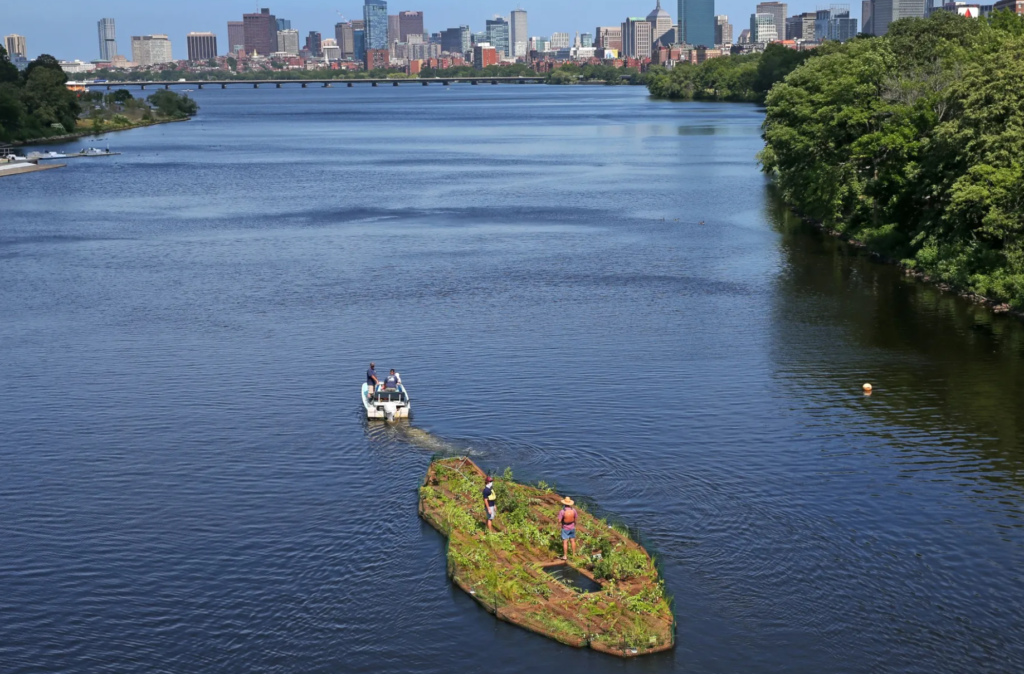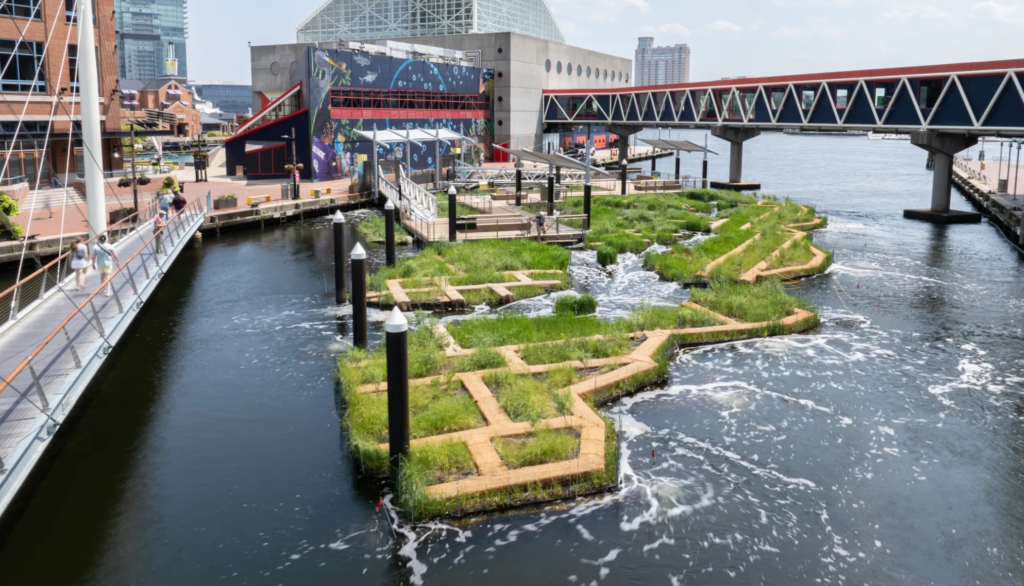



A new floating wetland at Baltimore’s Inner Harbor is setting the stage for a unique environmental restoration effort. Designed by the Baltimore-based architecture firm Ayers Saint Gross and supported by the National Aquarium, this 10,000-square-foot wetland habitat is an innovative solution to tackle pollution in the harbor while bringing back marine life. Built atop a platform mounted on pontoons, the wetland mimics a tidal marsh that filters pollutants, improves water quality, and attracts mollusks, fish, and seabirds.
This $14 million project not only addresses environmental concerns but also serves as a public park with seating areas and shaded spots to encourage visitors to engage with the waterfront. The project is part of the larger recovery of Baltimore’s aquatic health, which has been hampered by industrial pollution, toxic runoff, and aging sewer systems for decades.
Visitors can explore the wetland while learning about the Chesapeake Bay’s ecosystem, and see firsthand how nature and urban design can work together to create sustainable, livable environments.
Learn more about how floating wetlands are changing urban water landscapes.